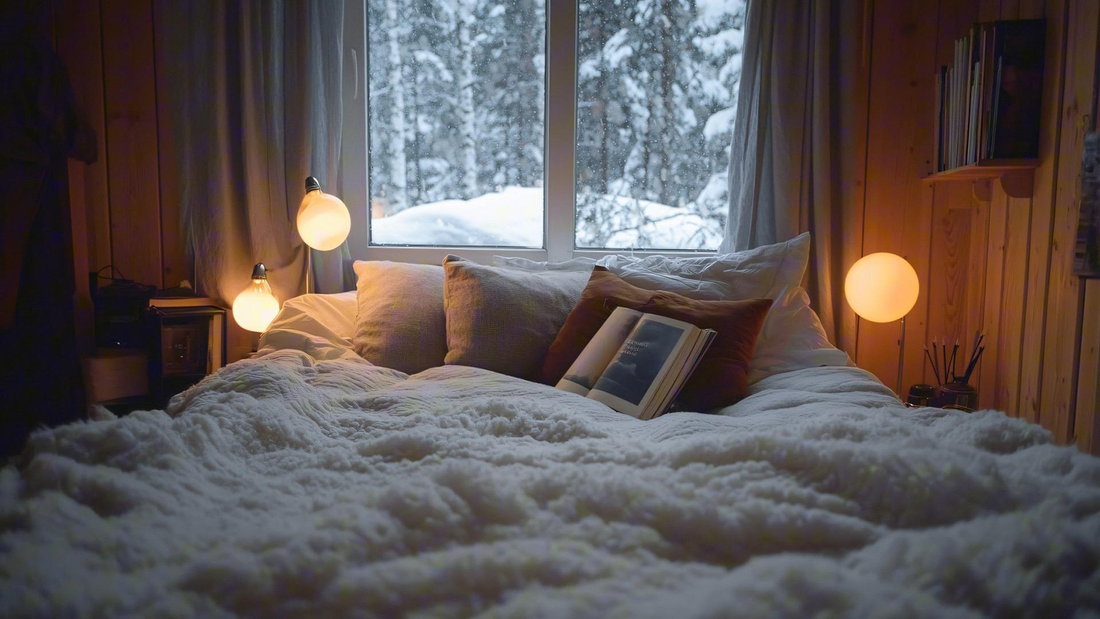
From Sleepless Nights to Restful Sleep: How I Used Moxibustion to Treat Insomnia
mars wuA Patient’s Struggle: The Case of Emily’s Sleepless Nights
Emily, a 38-year-old marketing professional, walked into my clinic with tired eyes and a weary expression. She had been battling chronic insomnia for over a year. Every night, she would lie awake for hours, her mind racing with thoughts about work, family, and life. When she did fall asleep, she would wake up frequently, never feeling truly rested.
She had tried everything—melatonin, herbal teas, white noise machines—but nothing provided lasting relief. The lack of sleep was affecting her mood, focus, and overall well-being. She told me, “I feel exhausted all the time, but my body just won’t shut down at night.”
After carefully evaluating her condition, I explained that, in Traditional Chinese Medicine (TCM), insomnia is often caused by Qi stagnation, blood deficiency, and an imbalance in the Heart, Liver, or Kidney meridians. Instead of forcing sleep with medication, we needed to restore balance and allow her body to naturally enter a restful state. That’s when I introduced her to moxibustion therapy.
Why Moxibustion for Insomnia?
Moxibustion, or the burning of mugwort (Ai Ye) near acupuncture points, has been used for centuries to calm the nervous system, regulate Qi, and promote deep, restorative sleep. Unlike sleep aids that merely sedate the brain, moxibustion works by improving circulation, balancing internal energy, and addressing the root cause of sleep disturbances.
✅ Warms & soothes the nervous system – Helps reduce stress and anxiety, common triggers for insomnia.
✅ Regulates the flow of Qi & blood – Improves circulation, allowing the body to relax naturally.
✅ Balances the Heart, Liver & Kidney meridians – Addresses the energetic imbalances that cause restless nights.
✅ Promotes long-term sleep quality – Unlike medication, it supports deep, uninterrupted sleep without dependency.
After explaining how moxibustion worked, Emily was eager to give it a try.
Step-by-Step: How I Treated Emily’s Insomnia with Moxibustion
Step 1: Identifying the Key Acupuncture Points
For insomnia, I focused on the following powerful acupuncture points:
🔥 HT7 (Shenmen) – “Spirit Gate”: Calms the mind, reduces overthinking, and helps with emotional restlessness.

🔥 SP6 (Sanyinjiao) – “Three Yin Intersection”: Nourishes blood, regulates hormones, and promotes relaxation.

🔥 KD1 (Yongquan) – “Gushing Spring”: Grounds the body’s energy and helps draw stress downward.

🔥 GV20 (Baihui) – “Hundred Meetings”: Balances the nervous system and relieves mental fatigue.

These points were selected to soothe her overactive mind, regulate her Qi, and restore natural sleep cycles.
Step 2: Applying Moxibustion Therapy
1️⃣ Light a moxa stick until it glows red and emits gentle heat.
2️⃣ Hold it 1–2 inches above each acupuncture point, moving it in small circles.
3️⃣ Apply warmth for 10–15 minutes per point, ensuring a comforting, not burning, sensation.
4️⃣ Repeat 4–5 times a week, preferably in the evening before bed.
After the first session, Emily felt a deep sense of relaxation. By the third treatment, she was falling asleep faster. After three weeks, she was sleeping through the night and waking up feeling refreshed.
How You Can Use Moxibustion at Home for Better Sleep
If you’re struggling with insomnia, restlessness, or light sleep, you can try moxibustion at home using these simple steps:
✅ Get a high-quality moxa stick (preferably smokeless for indoor use).
✅ Choose a quiet, relaxing space to perform the therapy before bed.
✅ Focus on points HT7, SP6, KD1, and GV20 to calm your mind and body.
✅ Use moxibustion for 10–15 minutes per point, 4–5 times a week.
✅ Pair it with deep breathing or meditation to enhance relaxation.
Moxibustion isn’t just about falling asleep faster—it’s about restoring the body’s natural sleep rhythm so you wake up feeling truly rested.
Final Thoughts
Emily’s story is one of many I’ve seen in my practice. Instead of relying on temporary sleep aids, she found lasting relief through the ancient wisdom of moxibustion. If you’re struggling with insomnia, TCM offers a holistic, natural way to regain restful sleep.
Ready to sleep better? Try moxibustion today and experience the difference.
👉 Have you tried moxibustion for sleep? Share your experience in the comments below! 😊
